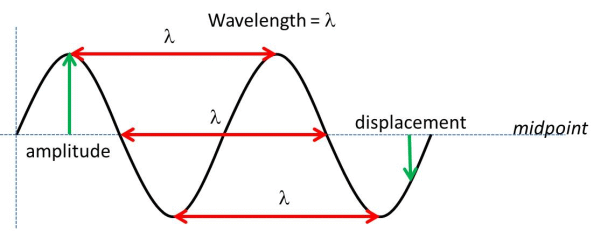Understanding the Basics of Electronic Waves: Properties, Applications, and Future Perspectives

Electronic waves are fundamental phenomena that play a crucial role in modern electronic systems and technologies. They are a form of energy propagation through an electronic medium and exhibit unique properties that are exploited in a wide range of applications, including telecommunications, signal processing, radar, wireless communication, and sensing, among others. In this research article, we provide an overview of electronic waves, including their properties, types, and behaviors. We discuss the basic principles of electronic wave propagation, such as frequency, wavelength, amplitude, and speed, and delve into the key characteristics of electronic waves, such as reflection, refraction, diffraction, and interference. We also explore the various types of electronic waves, including electromagnetic waves, surface waves, and guided waves, and their applications in different domains. Moreover, we highlight the current advancements and future perspectives of electronic waves, including emerging technologies and research trends. Through this comprehensive review, we aim to provide a better understanding of electronic waves, their properties, applications, and potential future developments, which could inspire further research and innovation in this field.
Introduction: Electronic waves are a fundamental concept in the field of electronics and play a critical role in various technologies that have revolutionized the modern world. They are a form of energy propagation through an electronic medium, which could be a vacuum, gas, liquid, or solid. Electronic waves are characterized by their unique properties, such as frequency, wavelength, amplitude, and speed, which determine their behavior and applications. Understanding the properties and behaviors of electronic waves is essential for designing and optimizing electronic systems, such as communication systems, radar systems, sensor networks, and imaging systems.
In this research article, we provide an in-depth overview of electronic waves, including their properties, types, and applications. We begin by discussing the basic principles of electronic wave propagation, including the concepts of frequency, wavelength, amplitude, and speed. We then explore the key characteristics of electronic waves, such as reflection, refraction, diffraction, and interference, which play a significant role in their behavior and applications. We also discuss the different types of electronic waves, including electromagnetic waves, surface waves, and guided waves, and their properties and applications in various domains. Furthermore, we highlight the current advancements and future perspectives of electronic waves, including emerging technologies and research trends.
Properties of Electronic Waves: Electronic waves exhibit several important properties that govern their behavior and applications. Understanding these properties is crucial for comprehending the fundamental principles of electronic wave propagation. Some of the key properties of electronic waves include:
- Frequency: Frequency refers to the number of cycles or oscillations of a wave that occur in one second and is measured in Hertz (Hz). It determines the energy content of the wave, with higher frequencies corresponding to higher energy levels. In electronic waves, frequency is directly related to the energy of the electromagnetic radiation or the electrical signal being propagated.
- Wavelength: Wavelength is the distance between two consecutive points that are in phase (e.g., two peaks or two troughs) of a wave and is denoted by the symbol λ (lambda). It is inversely related to the frequency, with higher frequencies having shorter wavelengths and vice versa. Wavelength is a crucial parameter in electronic wave propagation, as it determines the size and dimensions of the electronic components, antennas, and transmission lines used in electronic systems.
- Amplitude: Amplitude refers to the maximum displacement of a wave from its equilibrium position and represents the strength or intensity of the wave. It is directly related to the energy carried by the wave, with larger amplitudes corresponding to higher energy levels. In electronic waves, amplitude is used to represent the strength of the electrical signal or the electromagnetic field being propagated.






